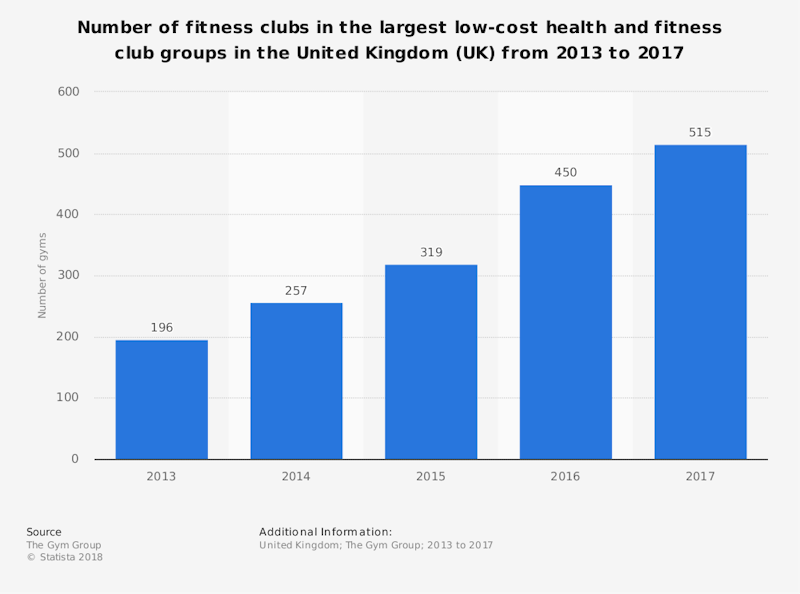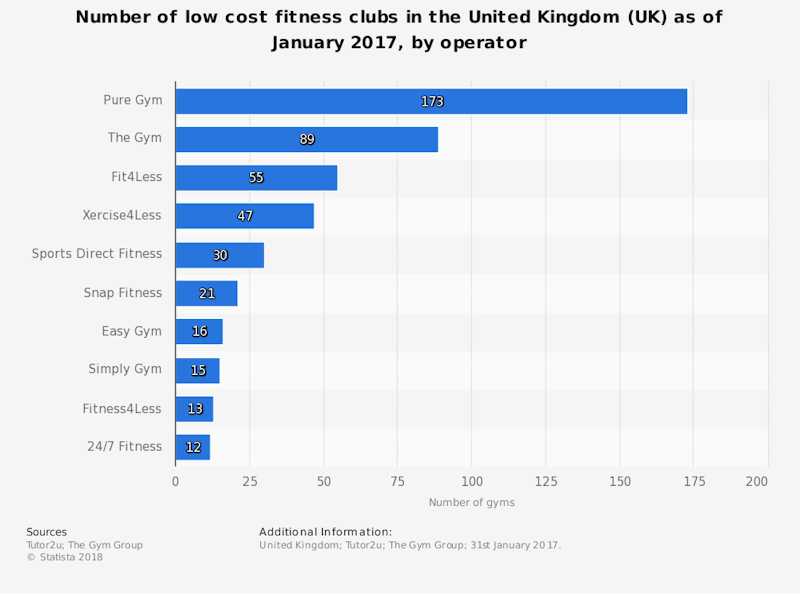Study Notes
Non-Price Competition in Markets – The UK Gym Industry
- Level:
- AS, A-Level, IB
- Board:
- Edexcel, IB, Eduqas, WJEC
Last updated 5 Nov 2018
The gym industry in the UK continues to grow with a new report published in 2018 estimating that one person in seven in the UK has a gym membership of one form or another.
The sector is always evolving. One feature is the rise of the low-cost budget gym chains, extensive use of pay as you go as a pricing tool and the rapid expansion of alternatives such as CrossFit, boxing and kick-boxing clubs and franchises, outdoor endurance events such as Tough-Mudder and regular Park runs. We must also consider the increasing per capita spend on individual fitness equipment and apps which provide in many cases a viable substitute for gym membership.

Despite the presence of several large players, there are still many small independent gyms operating. However, mergers and acquisitions have occurred, indicating that the structure of the industry is changing and perhaps evolving from monopolistic competition towards (in some segments) an oligopoly. In both of these forms of non-price competition, the strength of non-price competition is vital in attracting and maintaining membership.
An important shift in the gym sector in the UK is that there are now many more budget or low-cost clubs available to people who was an affordable membership – perhaps because they are on tight monthly budgets. These clubs do not offer the full bells and whistles associated with (luxury) premium health facilities but often they target time-scarce people looking to work out before work, in the evenings or at weekends. Budget gyms have become increasingly expert in using dynamic pricing strategies.
Dynamic pricing is a pricing strategy in which businesses set flexible prices for products or services based on current market demands.
The aim of dynamic pricing is to allow a business that sells goods or services online and/or via mobile apps to adjust selling prices on the fly in response to changing market demand.
These "dynamic" pricing changes are done automatically by software agents that gather data and use algorithms to adjust pricing according to business rules.
These dynamic pricing rules will often take into account factors such as
- The customer's location
- Time of day and day of the week
- Level of demand
- Competitors' pricing

Examples of price competition in the gym industry
- Competition in monthly fees
- Peak and off-peak memberships
- Discounts for older age people and full-time students
- Family membership deals
- Pay-as-you-go gym options rather than monthly subscriptions
- Discounts for tie-ins e.g. lower fees for those with health insurance
- Penetration pricing might be used by new entrants in the market
- Limit pricing might be used by existing gyms to make entry harder (and less profitable) for potential new rivals in a local area
Examples of non-price competition in the gym industry
- Flexible membership options including short-term memberships
- Length of time when giving notice of ending membership contract
- Quality and range of classes and their trainers
- Location of the gym, availability of free car parking, free Wi-Fi
- Additional facilities such as pool and spa, restaurants
- Quality and range of gym equipment
- Overall positioning of the gym in the market space e.g. boutique versus low-cost, budget model
- Access to health and nutrition advice, on-site testing
- Access to multiple clubs within a gym chain
- Customer feedback, reputation
You might also like

Non Price Competition & the Cost of a SuperBowl Advert
2nd February 2015

Sainsburys agrees a deal with Home Retail (Argos)
3rd February 2016

Strengthening Competition in Zambia
29th June 2018
A* Evaluation on Barriers to Entry and Exit
Topic Videos

How loyalty cards influence what we buy
16th April 2023
3.4.4 Oligopoly - Introduction (Edexcel A-Level Economics Teaching PowerPoint)
Teaching PowerPoints
Mastering Sunk Costs - A Level and IB Economics
Topic Videos
Daily Email Updates
Subscribe to our daily digest and get the day’s content delivered fresh to your inbox every morning at 7am.
Signup for emails